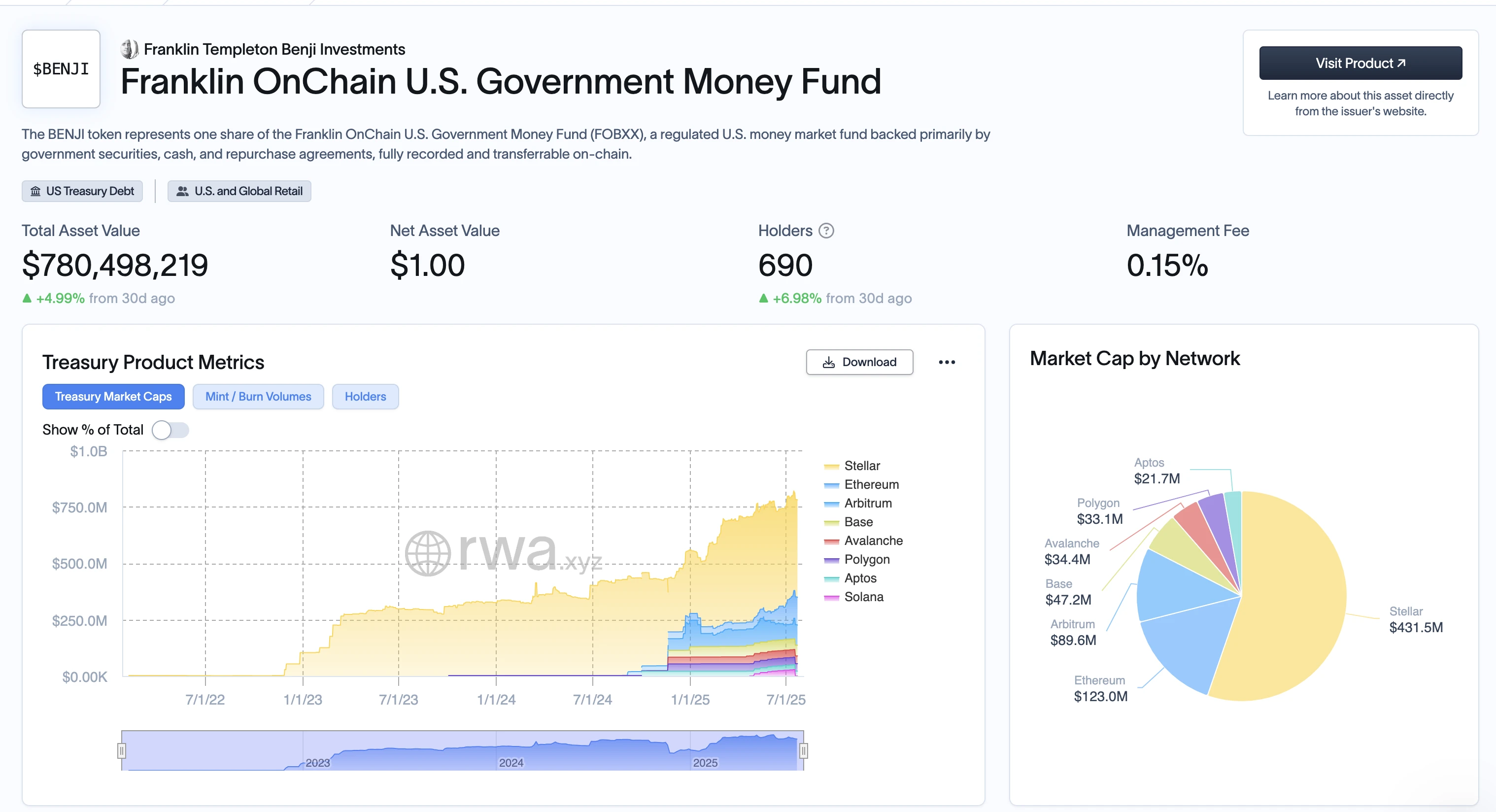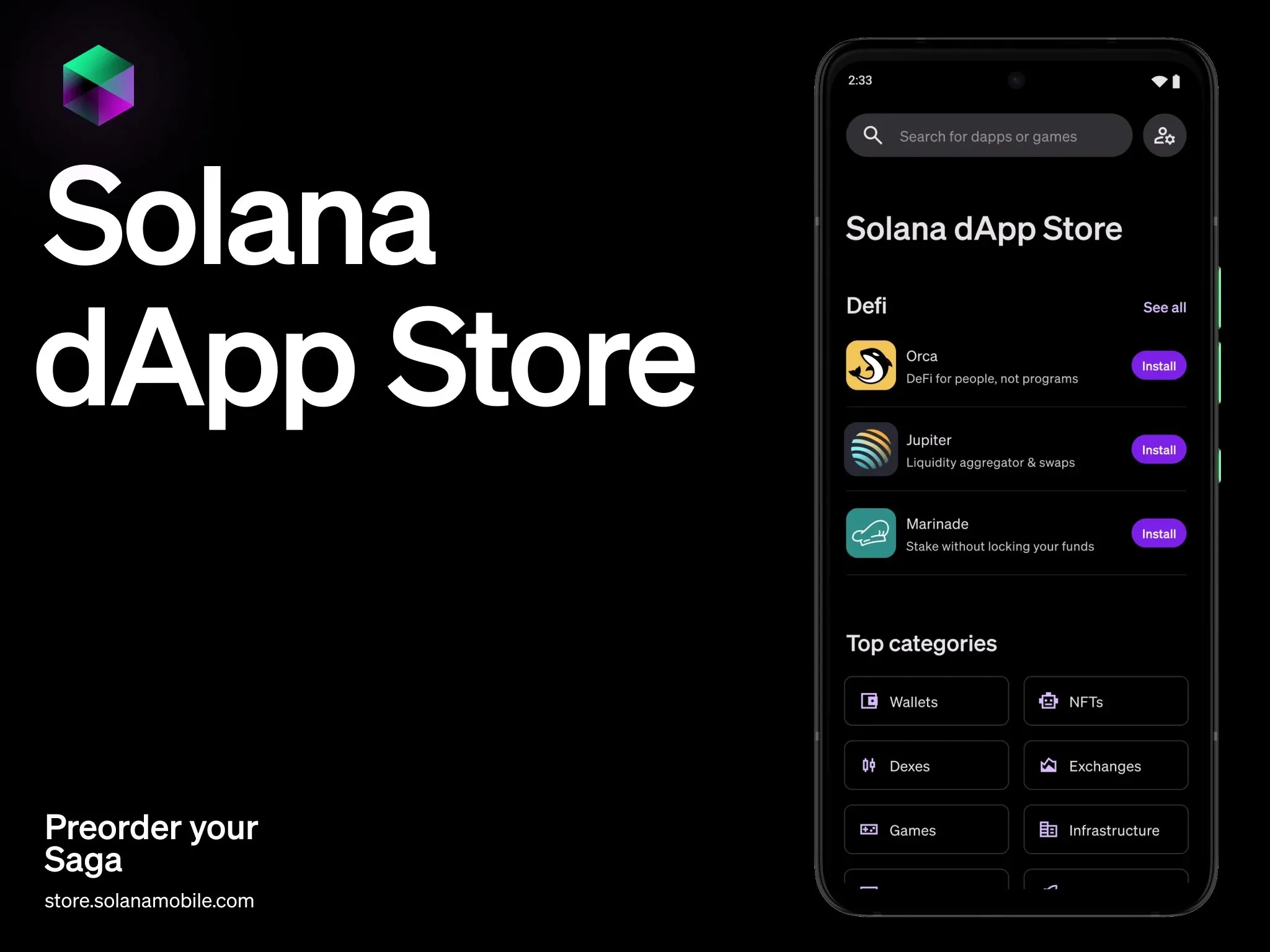Written by: Ethan
"2021 was the year of competition for Layer 1, and 2024 will be a carnival of Memes. So, where will the market's main line head in 2025?"
This question, which has sparked heated discussions on the X platform, is being clearly revealed by mainstream capital: with the successful legislation of the GENIUS Act and the formal inclusion of stablecoins into the U.S. sovereign regulatory framework, a new multidimensional financial narrative integrating "stablecoins × RWA × ETF × DeFi" is rising strongly.
In this profound evolution of cross-chain finance, the core focus is no longer on Bitcoin or Meme coins, but on the new order battle between Ethereum and Solana. The two public chains have essential differences in technical architecture, compliance strategies, expansion paths, ecological construction models, and even value foundations.
Currently, this competition, which will determine the future landscape, has entered a critical stage where capital is fiercely betting with real money.
Capital Betting Preferences: From "BTC Faith" to "ETH/SOL Either One"
Unlike previous crypto bull markets driven by macro monetary factors, which saw widespread rises and falls, the market in 2025 is showing clear structural differentiation. Leading projects are no longer rising in sync, and funds are concentrating their bets on selected battlefields, revealing a survival of the fittest scenario.
The most intuitive signal comes from the changes in institutional buying strategies:
For ETH: Several U.S. listed companies have begun to build large-scale Ethereum asset vaults.
- On July 22, GameSquare announced it would increase its digital asset vault authorization to $250 million and added 8,351 ETH, clearly aiming to "allocate quality Ethereum ecological assets to achieve stablecoin returns";
- SharpLink Gaming has cumulatively increased its holdings by 19,084 ETH this month, bringing its total holdings to 340,000 ETH, with a market value exceeding $1.2 billion;
- A new wallet address has purchased over 106,000 ETH through FalconX in the past four days, valued at nearly $400 million;
- The Ether Machine announced it would complete its reverse listing plan with 400,000 ETH and has received over $1.5 billion in financing support from top institutions including Consensys co-founder, Pantera, and Kraken, aiming to become "the largest public ETH output company."
For SOL: The buying scale is equally astonishing and has a more explosive speculative nature.
- The listed company DeFi Development Corp announced it has increased its holdings by 141,383 SOL, bringing its total holdings close to 1 million;
- SOL treasury company Upexi announced it bought 100,000 SOL for $17.7 million, bringing its total holdings to 1.82 million, with unrealized gains exceeding $58 million;
- According to CoinGecko data, PENGU has reached a market value of $2.785 billion, surpassing BONK ($2.701 billion), becoming the largest Solana ecological Meme coin by market value.

These phenomena indicate that ETH and SOL have become the preferred underlying assets for institutional multi-asset allocation. However, the investment logic of the two shows significant differences: ETH is used as "on-chain government bonds + quality asset underpinnings + institutional targets for spot ETF access"; SOL is being shaped into "high-performance consumer application chains + the main battlefield of the new Meme economy."
The two betting methods represent expectations for the future main lines of the crypto market: ETH is the financial engine taken over by institutions, while SOL is the speculative track for capital offensive bets.
ETH: The Misunderstood Institutional Axis, Cashing in on Financial Assets' Mission
Over the past two years, the Ethereum narrative has at times fallen into "idle operation" skepticism. From the lack of significant improvement in staking yields post-merge, to the fragmentation of Layer 2 ecosystems and persistently high Gas fees, to projects like dYdX and Celestia actively migrating, market expectations for ETH had once plummeted.
But the reality is: ETH has never left the stage; instead, it has become the core asset most deeply bound to institutional narratives. Its underlying support lies in three dimensions of deep institutional synergy:
Establishment of RWA's Core Hub Position
Currently, the total amount of RWA issued on-chain exceeds $4 billion, with over 70% occurring on the Ethereum mainnet and its L2 networks. Core products such as BlackRock's BUIDL, Franklin Templeton's BENJI, Ondo's USDY, and Maple's cash fund all use ETH as a key linkage layer or liquidity medium (like WETH). The larger the RWA scale, the more indispensable ETH becomes.

Anchor Assets for Spot ETFs and Stablecoin Policies
After the passage of the GENIUS Act, stablecoin issuers like Circle and Paxos have clearly stated that "on-chain reserve transparency" and "short-term U.S. Treasury pledge structures" are core demands. In Circle's latest asset allocation, WETH now accounts for 6.7%. Meanwhile, institutions like Grayscale and VanEck are accelerating the preparation of Ethereum spot ETF products. Following BTC, ETH is likely to become the next ETF focus.
On-chain Locking and Developer Ecosystem Still Hold Absolute Advantage
As of July 22, the total TVL of the Ethereum mainnet and L2 networks reached $110 billion, accounting for 61% of the global crypto TVL. The monthly active developers for ETH remain stable at over 50,000, which is four times that of Solana and more than eight times that of other L1s. This means that regardless of how market narratives change, ETH, as the "main financial layer" for on-chain asset governance, value accumulation, and liquidity distribution, has a foundational and ecological stickiness that is difficult to shake in the short term.
In terms of price, ETH is nearing the $4,000 mark. With BTC breaking through and stabilizing above $120,000, the process of ETH reigniting market expectations is not about creating a new story but rediscovering old value.
SOL: On-chain Native Consumption Power, Capital Logic Behind the Explosion
Compared to Ethereum's positioning as the "financial hub," Solana resembles a consumer infrastructure in high-frequency scenarios. Its narrative has successfully transformed from "the chain with the best technical parameters" to "the on-chain native blockbuster manufacturing machine," and is expected to achieve structural breakthroughs in 2024-2025.
Local Market for MemeCoins, Not a Secondary Transition:
In this round of the "crypto consumer goods" craze, the number and liquidity of MemeCoins on the Solana chain have reached historic highs. Market data shows that as of July 22, the highest market cap Meme project on Solana, BONK, reached $2.67 billion, followed by PENGU ($2.32 billion) and TRUMP ($2.2 billion), with the total market cap of the three surpassing Dogecoin. With Solana's extremely low Gas fees and high TPS, these projects have formed a rapid closed loop of "low-cost experiments → community-driven FOMO → high-frequency trading stimulation." On Solana, Meme has become the native consumption behavior of on-chain users.
Capital Bets on "On-chain Activity," Not Technical Routes:
The massive increases in holdings by listed companies like DeFi Development Corp and Upexi indicate that mainstream capital views SOL as a triad of "tradable assets + user growth indicators + narrative carriers," focusing on ecological activity, trading depth, and the consumption attributes of "on-chain stories," rather than technical details.
Ecological Products Transitioning from Blockbusters to "Basic Consumption Layer":
From the DEX experience of Jupiter, Backpack mobile wallet, to the Solana phone and the upcoming Solana App Store, the entire ecosystem is attempting to build a closed loop that is closer to Web2 user habits. On-chain native consumption (including Meme, DePIN, mini-games, community points, social media) has become Solana's "local life," creating natural consumption scenarios for SOL. Although its TVL is only 12% of Ethereum's, the transaction frequency, per capita interaction volume, and total Gas consumption on the Solana chain have significantly surpassed traditional L1s like Polygon and BNB Chain. It resembles a "daily active entry" for crypto natives rather than a purely financial "pricing anchor."

Price Signals: Breaking $200, Entering a High Volatility Uptrend:
As BTC stabilizes at $120,000 and ETH approaches $4,000, SOL has recently also returned above $200. High volatility accompanied by high heat is itself a precursor to the brewing of new narratives and major position shifts. What we see is not speculative frenzy but an increasingly shorter feedback loop between "on-chain behavior - price reaction."
This is a model driven by consumption data that shapes trading expectations, something ETH cannot achieve, making SOL the paradigm.
Whale Games and Policy Catalysts: Who Can Bear the Bullets of Major Position Shifts?
Technical applications determine the "narrative potential" of public chains, while capital and policy determine their "trading capacity"—especially when BTC breaks $120,000 and the market enters a major uptrend, identifying the next phase's "capital aggregation zone" is crucial.
On-chain data shows that since Q2 2025, the "on-chain positioning" behaviors of three major institutions have exhibited distinctly different strategies: Grayscale has continuously increased its ETH holdings from May to July (a total of 172,000 ETH, approximately $640 million), clearly for building its spot ETH ETF foundational position; Jump Trading has frequently adjusted its positions on the Solana chain since June, focusing on BONK, PENGU, and Jupiter, accumulating nearly 280,000 SOL through multiple addresses; DeFi Development Corp and Upexi have both continuously announced increases in SOL holdings, each forming holdings exceeding one million (total market value nearly $500 million), achieving considerable unrealized gains.
This is not a simple "win or lose" bet but a market stratification: ETH is "structural asset allocation," while SOL is a "short-cycle volatility tool."
Differentiated Policy Trends Propel "Dual-Line Growth." On July 19, U.S. President Trump officially signed the "U.S. Stablecoin National Innovation Guidance Act (GENIUS Act)," marking the establishment of the first federal regulatory framework for stablecoins in the U.S. Coupled with Coinbase and BlackRock submitting S-1 filings for a spot ETH ETF, the path for "ETH to be included in the compliance framework" is becoming increasingly clear. At the same time, the Solana team is collaborating with exchanges like OKX and Bybit to promote experiments in "compliant issuance of consumer assets." For example, OKX launched a dedicated Launchpad for Solana chain assets in July and introduced a light KYC mechanism for the issuance process of Meme coins.
This "dual compliance" means that policy dividends are being distributed in a differentiated manner based on application scenarios, capital attributes, and risk preferences: ETH continues to attract traditional capital, while SOL becomes a compliant testing ground for younger users and consumer scenarios.
Short-term Policy Expectations: ETH Benefits More Clearly, SOL Faces Fewer Restrictions. Although ETH is at the forefront of policy dividends regarding ETFs and RWAs, it also faces multiple hurdles from the SEC concerning the classification of securities and staking. The SOL ecosystem, having less involvement in centralized issuance and complex staking channels, allows its tokens and applications to more easily enter a regulatory "gray safe zone." This results in a more stable but longer upward path for ETH, while SOL's upward trajectory is steeper and more volatile.
Who Defines the Future? Hedged Allocation, Not Either/Or
From the market trajectory following BTC's breakthrough of $120,000, the differences between ETH and SOL are no longer a linear question of "who replaces whom," but rather a distributed answer of "who defines the future within what cycle."
ETH is the Mid-to-Long-Term Narrative Protagonist Supported by Structure
With the backing of the GENIUS Act, the path for ETH to be included in the financial compliance system is clear. Whether it is the advancement of spot ETFs or its positioning as a "clearing and settlement layer" in the RWA model, ETH has become the "core asset" for Wall Street's allocation of blockchain assets.
From the positioning logic of institutions like BlackRock and Fidelity, ETH is evolving from a "Gas Token" to a "fundamental financial platform," with its valuation anchor shifting from on-chain activity to government bond yield models and staking rates. The way ETH wins is not through explosive growth but through accumulation.
SOL is the Short-Term Exploder in Structural Cracks
In contrast to ETH's stability, SOL has become the main battlefield for capital games in high-frequency trading, Meme coin narratives, terminal applications, and native consumer products (like the Saga phone). From BONK to PENGU, and then to the governance experiments of JUP, the Solana chain has built a high liquidity, high penetration "native narrative market."
Combining this with on-chain performance: SOL's TPS, costs, and terminal response speed continue to lead; the independence of the SVM ecosystem also frees it from the challenges of EVM ecosystem competition and redundant construction.
More importantly, SOL is one of the few narrative niches "capable of absorbing capital and willing to be highly volatile." After BTC initiated its major uptrend, SOL has become a core short-cycle option for capturing "rapid responses to capital rotation."
Therefore, this is not a "multiple-choice question," but rather a "cyclical game question":
For mid-to-long-term funds optimistic about institutional reform and betting on the structured entry of traditional capital, ETH is the first choice. For short-cycle participants looking to capture opportunities from capital rotation and narrative explosions, SOL offers more tension in Beta exposure.
In the interplay between narrative and institution, volatility and accumulation, ETH and SOL may no longer be opposing options but rather form an optimal combination under the mismatches of an era.
Who defines the future? Currently, the answer may not be a single project but rather the ongoing process of fine-tuning this "combination weight."
免责声明:本文章仅代表作者个人观点,不代表本平台的立场和观点。本文章仅供信息分享,不构成对任何人的任何投资建议。用户与作者之间的任何争议,与本平台无关。如网页中刊载的文章或图片涉及侵权,请提供相关的权利证明和身份证明发送邮件到support@aicoin.com,本平台相关工作人员将会进行核查。




